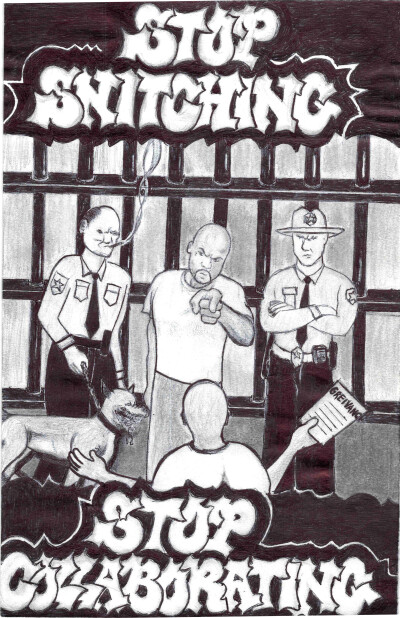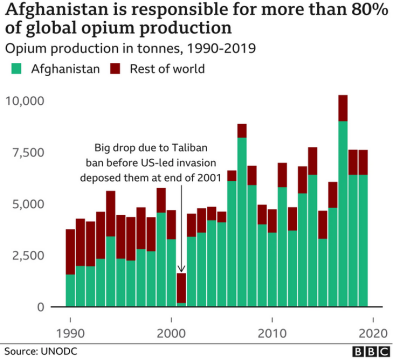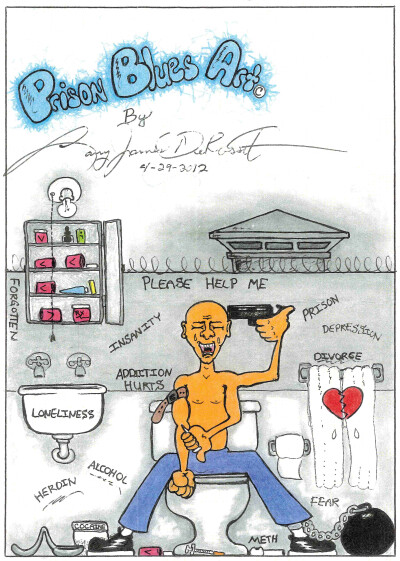
CA Silences Reports of Drug Trade in Prisons

MIM Distributors published my article ‘Programming/Mental Health Denied as Drug Cartel Runs CA Prison’ in ULK 82, to highlight correctional officers’ (C/Os) direct involvement in the constant infestation of drugs in the California Department of Corrections and Rehabilitation (CDCR) Richard J. Donovan Correctional Facility (RJDCF). In April 2023, I went a step further by bypassing CDCR’s inmate grievance process in order to catch a C/O in the act of distribution.
You see, CDCR’s departmental operations manual (DOM) at Section 31140.6.2, regards felonious conduct like drug smuggling in a state correctional facility as ‘Category II’ serious employee misconduct investigated by the Office of Internal Affairs (OIA).
I figured undisputed evidence directly to OIA would not only prevent a coverup inside the prison, but also save lives of those addicted to using while confined based on accessibility, and maybe even a citizen faced with some newly released parolee on the prowl to maintain a drug high fostered therein.
I used my influence and social status with their prisoners as an investigative tool to uncover one C/O’s method of smuggling. Once I monitored and confirmed the C/O’s pattern practice, including specific inmates receiving drug shipments, I recorded the exact date, time, and location consistent with audio video security surveillance (AVSS) and body worn camera (BWC) footage installed thanks to the current Armstrong v. Newsom N.D. (94-CV-02307 CW) injunction.
Late April 2023, I completed and mailed my findings on the attached CDCR approved DOM Section 31140.6.2 Category II OIA form, directly to the OIA, emphasizing concern over my safety, requesting therefore to remain anonymous. However, on about 28 June 2023, OIA Senior Special Agent Michael Newman forwarded my reported findings and identity back to RJDCF Warden James Hill in the attached correspondence “For Appropriate Handling” which commence first with the involved C/O immediate cease of all drug shipments in my specific housing unit.
Then came direct scowls and open unwillingness to address housing needs or issues followed by rumors within the prison population of me being a “snitch on C/O’s”.
And finally, as drug withdrawal riled up many addicts’ moods from days and weeks without fix, one mustered the boldness to confront me on behalf of the involved C/O, on a rant like some four legged creature foaming from fangs, blaming me for his forced clean and sober reality.
While I no longer advocate or impose violence, I am no stranger to such since I could fuck and fight before I could read and write. I’d like to think that not sensing fear sent the man beast on his way, disappointing the gazing C/O who not only stood watching the entire antic, but set the whole play in motion.
Meanwhile, my DOM section 31140.6.2 reported findings was converted into an inmate grievance, log #459686, then intentionally delayed until all AVSS and BWC footage evidence was purged. Once so, RJDCF reviewing authority M. Palmer issued the attached grievance response discrediting me as some liar or one who simply made up this whole event.
Initially, I found it courageous and heroic to risk my own personal safety, maybe even my life, to rid the prison environment of drugs by exposing not merely the problem, but more so, the reason this problem exists and persists. I always thought with the right facts and evidence I could make a huge difference, but now I realize that stopping drugs in prison is as futile as Ronald Reagan’s war on drugs campaign.
That’s because, many officials I turned to turned out to be those who want drugs inside prison, and rather than utilize resources and power to target C/O’s who introduce drugs into prison, these officials opt to use their resources and power to target the very individual bringing detailed facts to their attentions.
To me, a sacrifice is only grand should it effect change in better for those who follow. With the extent of CDCR’s decay, this type of exposure is pure suicide, or positions one to be forced to homicide, and whether the former or latter, when it’s all said and done, drugs will continue to be made available to those in prison who want them until and unless these prisons are closed down.
MIM(Prisons) responds: We agree that the actions this comrade took to fight state-sponsored drug trafficking was brave. It is also brave for the comrade to look at the effects of these actions, draw lessons from them, and be self-critical in front of the movement as a whole. This is a good example of learning through practice, and by sharing these stories we can all learn from each others’ practice.
We can also see how the campaign to combat drug addiction in prisons is tied to the campaign to “Stop Collaborating” among prisoners. These state-employed drug dealers are using other prisoners to attack those who speak up. These collaborators, accusing others of “snitching” on pigs, are enemies of the people. The pigs are professional snitches. To use the state to stop abuses within the state as this comrade attempted to do, is an honorable, if sometimes futile, thing to do.
As futile as this comrade’s risks taken were in the immediate term, we are not quite so pessimistic on the prospect of ending drugs in prison. As we’ve discussed many times, it is by building a community in righteous struggle for justice that we can best provide the antidote to addiction. While prisoners across the country are writing to us about the dire conditions currently, we can look to the history of socialist China, which was ravaged with widespread opium addiction across the population just decades before liberating themselves from imperialism establishing a socialist state, and ending addiction in the country for decades to come. No small task for sure, but not impossible.
While those fighting addiction feel isolated now, through the pages of Under Lock & Key we can see that there are more of you then you realize, and we can continue to share these lessons and build successful strategies to help the masses overcome drug addiction.
Related Articles:This article referenced in:









